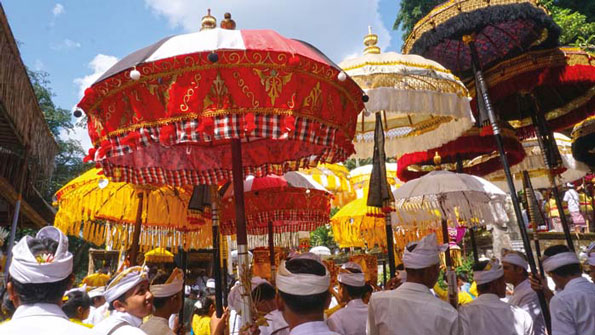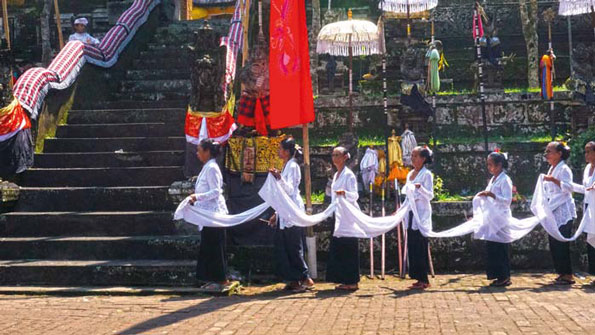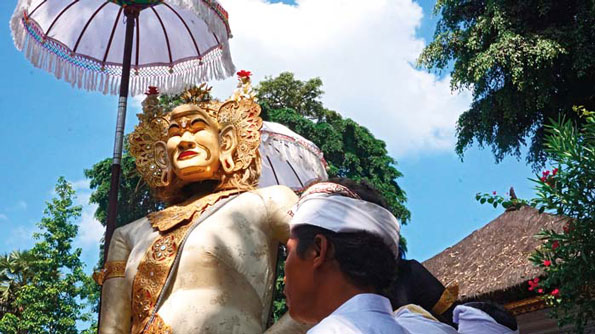Odalan Ceremonies are the anniversaries of the temples on the island and are very special, large celebrations every year. Learn More:
In this island of temples – around 4,539 at last count – there are ceremonies celebrating life almost every day of the year. In the temples and on the quiet beaches you may see spectacular sights. Some periods peak – like Purnama (or full moon period) when the villages are awash and temples decorated and the sound of praying can be heard. When the energies are highest, it makes the best time to pay devotions.

Many temples use the Saka calendar (Balinese calendar), which consists of 210 days a year. This means Odalan takes place almost twice in a Gregorian calendar year. Each and every temple on the island has its own celebration. Known as Odalan, it is a festival to celebrate the temple’s anniversary and while everyone enjoys it, it is primarily a religious time. At this time the gods come down from the heavens to be present in that particular temple. All religious icons and objects are brought out, decorations ranging from the bizarre to the spectacular adorn the grey stone walls. Special figures are made of coloured rice flour and women work in their homes at making special temple offerings. They are brought to the temples in long processions known as Mapeed – and to see one is to see something truly extraordinary
Beautiful gamelan sets are brought in to play music for the gods, with dozens of uniformly dressed musicians sitting about waiting for their time to play a ceremonial accompaniment and to provide music for the various dancers.

Incredible rites and rituals are practised as well as dance and theatre – just to entertain the gods. Of course, while prayer and devotion is the primary function, people are entertained as well and it is happy time for all.
Offerings for Odalan could contain money – usually Rp 1,000 (10 US cents) to Rp 2,000 – and other things like grilled chicken or a small roasted suckling pig.
After the mass prayer, the congregation will take a break and feast a little before continuing the festival. This break usually occurs in the late afternoon, while the ceremonies and entertaiment will last until late at night.
Different big temples retain their own quirky ceremonial events. The beautiful 10th Century PuraSamuanTiga, near Ubud for example, is known for its high offerings and its extraordinary cleansing rituals known as PerangSampian. Hundreds of men move quickly through the temple in waves, sending high energy to every corner. Later they don grass hats and brooms for a ritual sweeping of all things negative. Towering at almost two metres high, these Gebongan offerings take much skill to carry them in an impressive mapeed or procession to the temple. The offerings are arranged from the smaller ones in the front born up with the huge ones finishing off the procession.
All kinds of religious objects wrapped in rare and precious textiles, special umbrellas, effigies and huge puppets known as WayangLandung are paraded around the temple in a feast of colour and activity.

People might wonder why Balinese spend so much time on rituals – including the serving of daily offerings – but it is simply their way of showing appreciation to their gods and the surrounding spirits. They believe that to embrace and respect them and try to work with them, rather than fear them, helps to keep the balance between good and evil, light and dark. This is just one of the reasons why Bali is such a special place.












